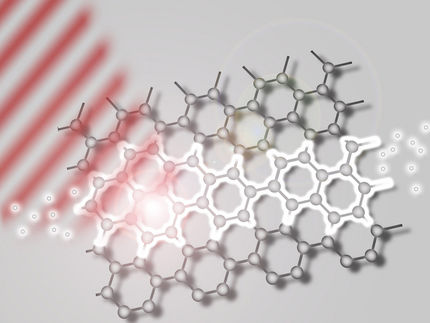Extraordinarily strong nonlinear optical graphene-like material could renovate nonlinear photonics
The discovery could enable high resolution imagining at low-power
Advertisement
Nonlinear optics is a key enabling technology of our modern society, such as in imaging and high-speed data communication. But the traditional devices suffer from relatively small nonlinear optical coefficients of conventional optical materials. An interdisciplinary team of scientists from Aalto University, University of Eastern Finland, University of Arizona, Cambridge University, University of Ottawa, Italian Institute of Technology, and National University of Singapore, discovered that monolayer molybdenum disulfide, a unique two-dimensional (2D) layered material similar to graphene, has an extremely large nonlinear optical response, which can efficiently convert low-energy photons into coherent high-energy photons.
“This unusual property can be used for highly miniaturized on-chip photonic devices, such as high-resolution imaging and efficient optical data switching applications,” tells Prof. Zhipei Sun from Aalto University, Finland.
The researchers also observed that the nonlinear multiphoton processes of this material are very sensitive to the number of layers and crystal orientation. The researchers demonstrated that these nonlinear optical processes could also be exploited for rapid and reliable characterization of similar atomically thin materials. This is of great interest in the research and industry.
”Our demonstrated multiphoton approach is a few orders of magnitude faster than the conventional optical microscopy methods. This clearly shows its potential for industrial high-volume and large-size material and device characterization for next generation electronics and photonics,” says Prof. Harri Lipsanen from Aalto University.
Interestingly, the international team also found that the high-order nonlinear optical processes are stronger than the low-order ones. This is contrary to intuition, and is quite surprising, since the intensity of non-linear processes usually decreases with the order in the textbook. Prof. Nasser Peyghambarian, the Finland Distinguished Professor from College of Optical Sciences at the University of Arizona, USA, highlights:
“Such a unique nonlinear optical response is not only interesting for fundamental physics, but also very noteworthy for practical applications, such as, microscopy, therapy, and data switching”.
Original publication
Antti Säynätjoki, Lasse Karvonen, Habib Rostami, Anton Autere, Soroush Mehravar, Antonio Lombardo, Robert A. Norwood, Tawfique Hasan, Nasser Peyghambarian, Harri Lipsanen, Khanh Kieu, Andrea C. Ferrari, Marco Polini & Zhipei Sun; "Ultra-strong nonlinear optical processes and trigonal warping in MoS2 layers"; Nature Comm.; 2017
Lasse Karvonen, Antti Säynätjoki, Mikko J. Huttunen, Anton Autere, Babak Amirsolaimani, Shisheng Li, Robert A. Norwood, Nasser Peyghambarian, Harri Lipsanen, Goki Eda, Khanh Kieu & Zhipei Sun; "Rapid visualization of grain boundaries in monolayer MoS2 by multiphoton microscopy"; Nature; 2017























































